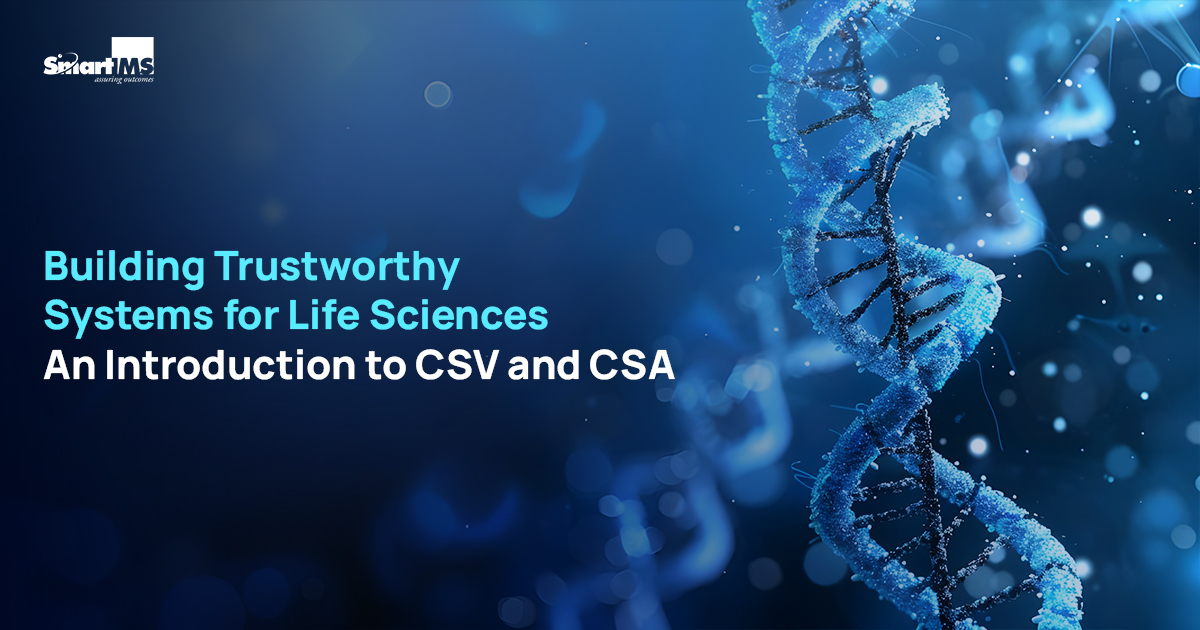In today’s digital data driven world, ensuring reliability and integrity of computer systems is of utmost importance. Especially in industries like pharmaceuticals, healthcare, and finance, where even minor system glitches can have serious consequences such as patient safety, information confidentiality data leaks, cyber-attacks, compliance failures, etc.
To tackle such threats, there are two crucial processes that work hand-in-hand to guarantee trustworthy systems, namely: Computer System Validation (CSV) and Computer Software Assurance (CSA)
What Does CSV Comprise of?
CSV is a documented process that verifies whether a computer system meets its intended use and complies with regulatory requirements. This involves a thorough evaluation of the entire system, including hardware, software, procedures, and user training. A 2020 study by the American Society for Quality (ASQ) found that 85% of medical device companies utilize CSV to ensure compliance with FDA regulations. This process typically involves:
- Requirements Definition: Clearly outlining what the system needs to achieve.
- Design Verification: Ensuring the system design aligns with the defined requirements.
- Installation Qualification (IQ): Confirming the system is installed according to specifications.
- Operational Qualification (OQ): Demonstrating the system performs as intended under normal operating conditions.
- Performance Qualification (PQ): Testing the system’s performance under various load conditions to ensure consistency and reliability.
- Change Control: Implementing a system to manage and document any modifications made to the system.
What Does CSA Comprise of?
Though CSV has continued to remain an industry preference for regulatory compliance, recently the FDA (Food and Drug Administration) introduced a new approach called Computer Software Assurance (CSA). It emphasizes a risk-based strategy, focusing validation efforts on critical functionalities that directly impact patient safety and data integrity. In fact, a study conducted by Frost & Sullivan depicts that 72% of organizations believe risk-based validation can significantly reduce validation costs, further supporting the adoption of CSA.
The process involved in CSA is as follows:
- Risk Management: CSA prioritizes activities based on the potential risks associated with different system features. High-risk areas receive rigorous testing, while low-risk areas may require less intensive validation.
- Focus on Testing: CSA encourages building quality into the software from the initial design phase through development and deployment. Enabling you to focus on testing rather than repeated documentation.
- Leveraging Automation: CSA promotes utilizing automated testing tools to streamline the validation process and improve efficiency.
Why the Shift from CSV to CSA?
The move from CSV to CSA reflects a shift towards an approach that prioritizes actual system performance and risk mitigation over documentation driven compliance. The key benefits of this shift include:
- Reduced Costs and Time Spent on Validation: By focusing on critical areas, CSA can streamline the validation process, saving time and resources.
- Improved System Quality: The emphasis on quality throughout the lifecycle can lead to more robust and reliable software.
- Enhanced Regulatory Compliance: A risk-based approach demonstrates a proactive understanding of potential issues, fostering better regulatory compliance.
Conclusion
The evolution from CSV to CSA represents a paradigm shift in how software quality and compliance are managed in regulated industries. By adopting a risk-based, quality-focused, and efficiency-driven approach, organizations can ensure robust compliance while fostering innovation and operational excellence.




